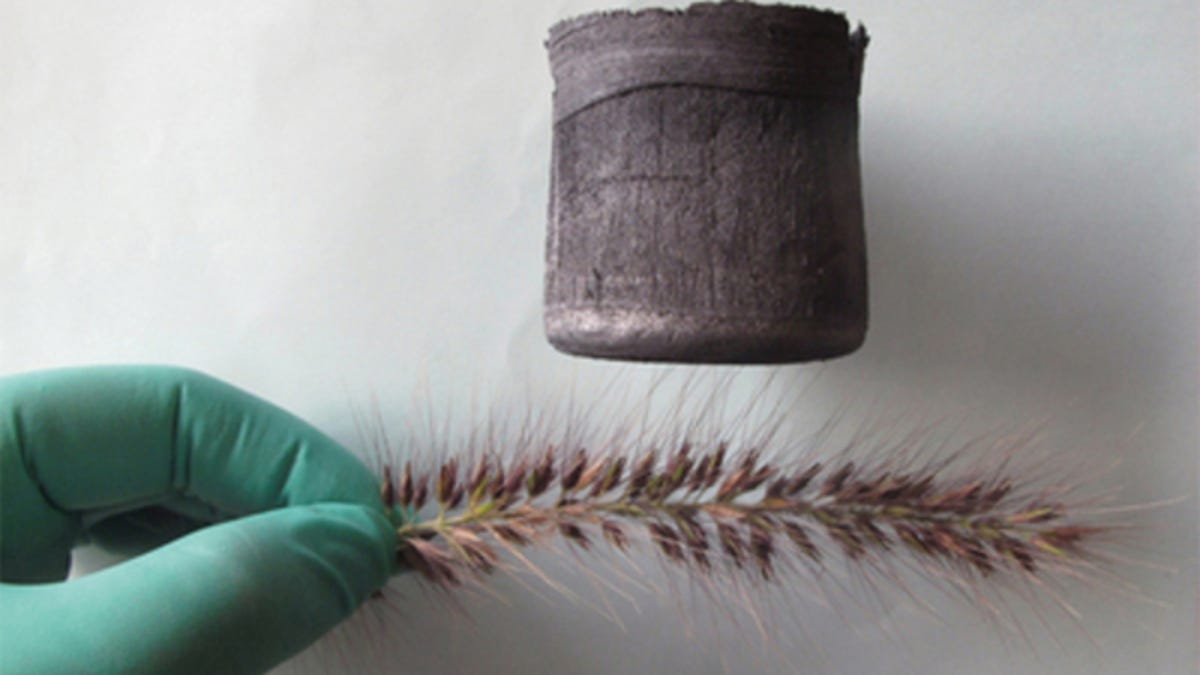Graphene aerogel is the new world's lightest substance
Aerographite has been dethroned as the world's lightest substance, replaced by a new form of graphene aerogel.

Graphene aerogel resting on a delicate plant.
(Credit: Zhejiang University)
Aerographite has been dethroned as the world's lightest substance, replaced by a new form of graphene aerogel.
As research into aerogel continues, scientists are discovering ever-lighter variations. First, there was carbon nanotube aerogel, with a density of 4 milligrams per cubic centimetre. Then along came silica aerogel, which weighed in at 1 milligram per cubic centimetre and garnered 15 entries in Guinness World Records. It was ousted by metallic microlattices, at 0.9 milligrams, and then aerographite, at 0.18 milligrams.
Now, a new graphene aerogel created by scientists led by professor Gao Chao at the Zhejiang University has swept past, weighing in at just 0.16 milligrams per cubic centimetre.
For reference, the density of air is 1.2 milligrams per cubic centimetre — so the new material is 7.5 times lighter than air. It's twice as heavy as hydrogen — the lightest element there is — but beats out helium, which has a density of 0.1786 milligrams per cubic centimetre.
Gao Chao's team had already been building macroscopic graphene materials in one and two dimensions; to create the new aerogel, the researchers branched out into the third dimension, using a new method of freeze drying the solutions of carbon nanotubes and graphene to create malleable carbon sponges.
PhD candidate Sun Haiyan explained, "It's somewhat like large space structures such as big stadiums, with steel bars as supports and high strength film as walls to achieve both lightness and strength. Here, carbon nanotubes are supports and graphene is the wall."
The new material is amazingly absorptive, able to suck in up to 900 times its own weight in oil at a rate of 68.8 grams per second — only oil, not water, which means it has massive potential as a cleaning material when it comes to events such as oil spills.
Then, both the graphene aerogel and the oil could be recycled.
The full results of the project can be found published in Nature, titled "Solid carbon, springy and light".

